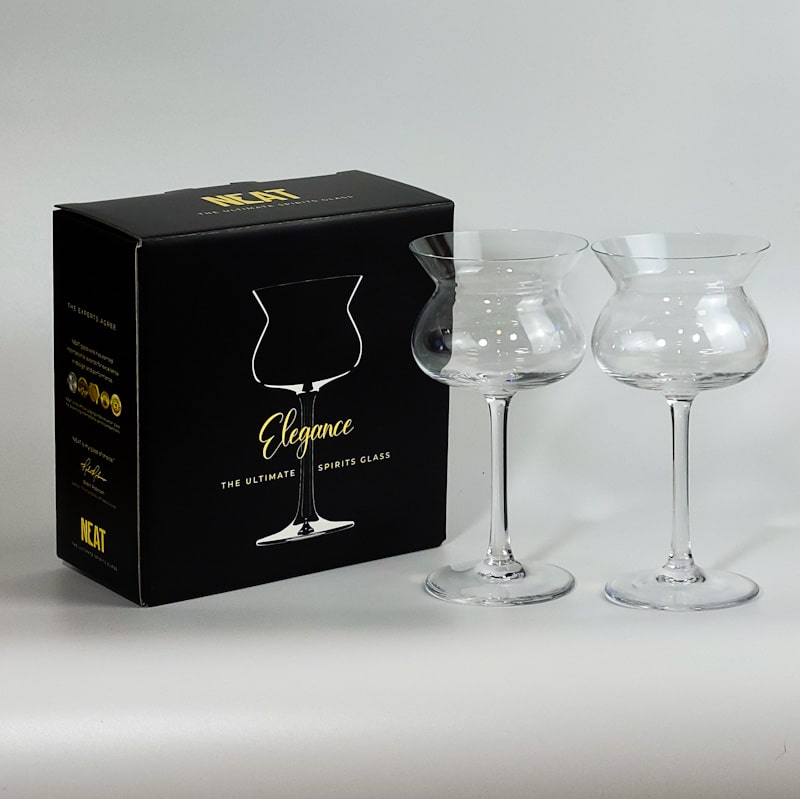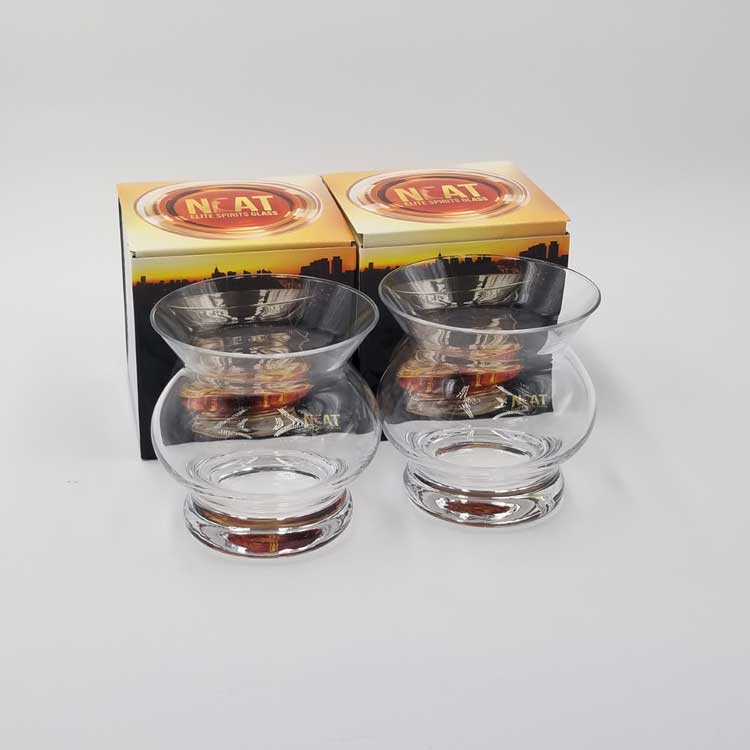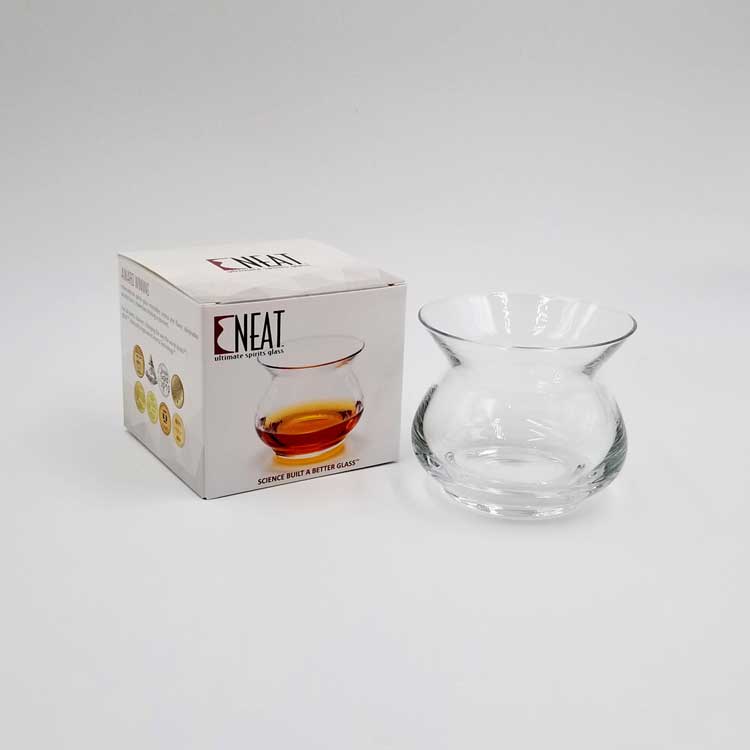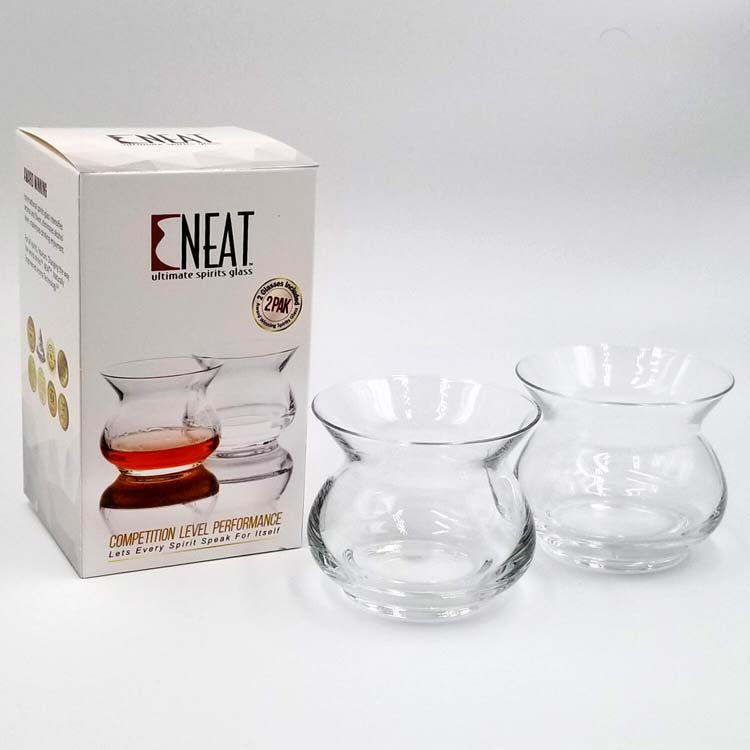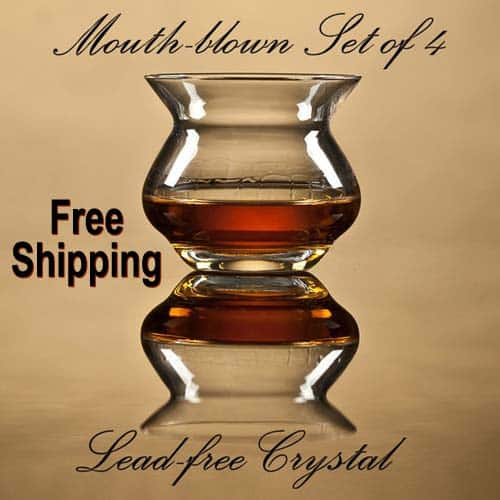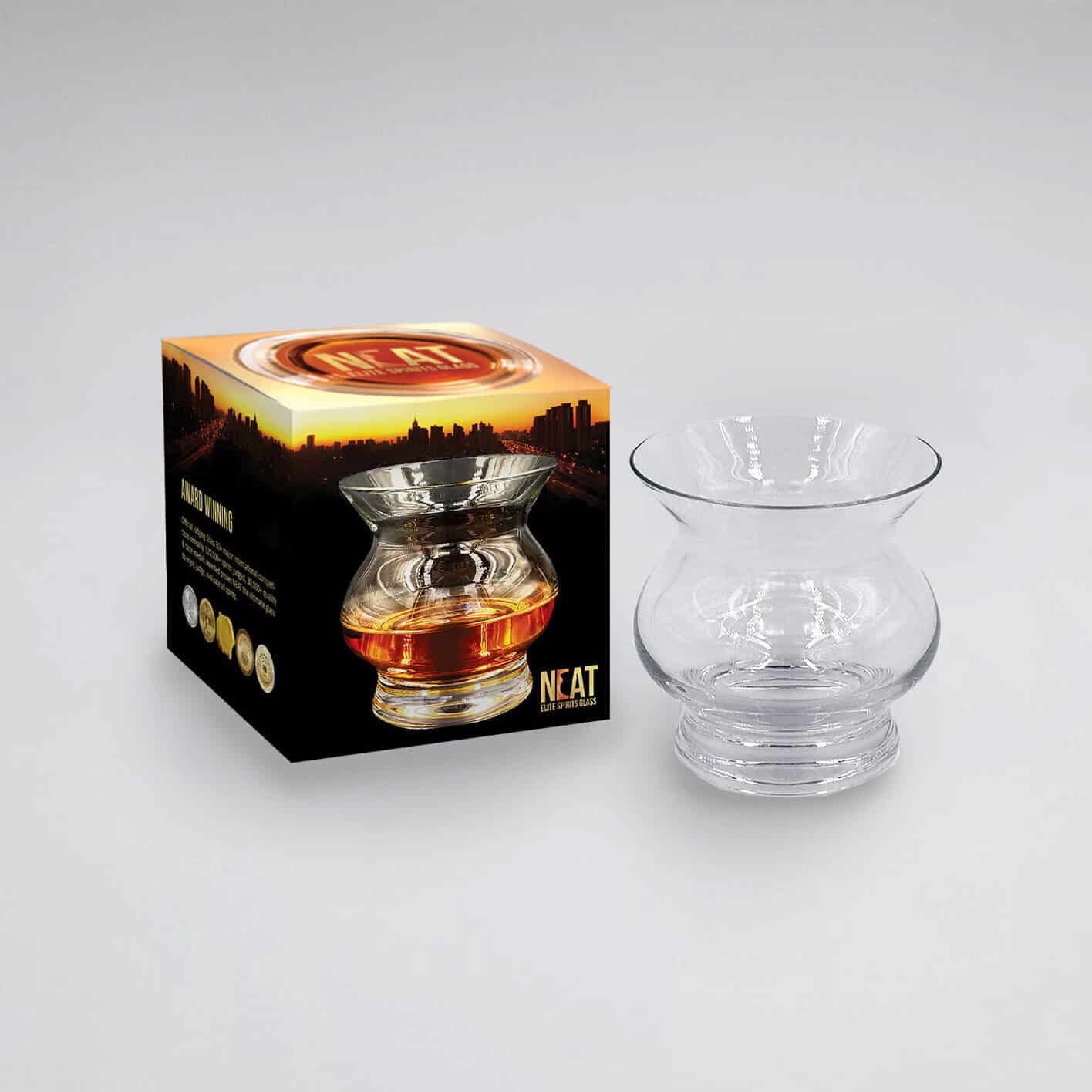
Swirling Spirits – the Best Way to Release Aromas
Why swirl?
Taken for granted by the serious drinker, and looked upon with skepticism by the newbie, swirling is an essential part of the nosing and evaluating process.
No swirling = no evaporation = no smell. Swirling enhances evaporation by adding more aromas to the vapor cloud for detection. Practice vigorous swirling to create more evaporation consequently more aromas.
How does swirling work?
Every liquid has an invisible force at its interface with the atmosphere (air) called surface tension. Ever wonder why a water bug can walk on the surface of the water without falling in? Surface tension. If surface tension keeps a water bug on the water surface, it will keep aroma molecules in the liquid of a spirit or wine. Swirling breaks the surface tension, allows aromas to escape and enhances evaporation. Large drinking glass bowl diameters increase wetted sidewall area, improve swirling velocity, and release more aromas. Swirling height = more wetted sidewall area = more evaporation. See the first 2 exhibits for the definition of swirling heights in different glassware.
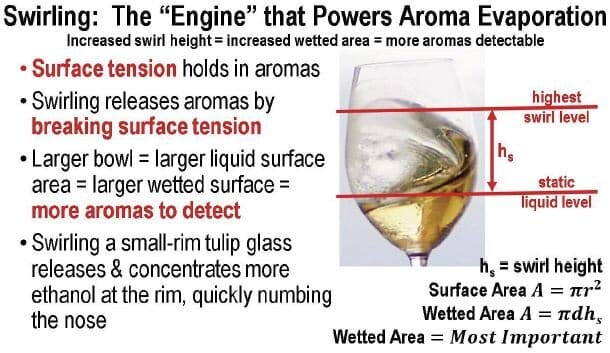

For the science-minded (others may skip this paragraph), swirling enhances evaporation in several ways:
Swirling generates kinetic and heat energy, increases molecular collisions and velocities, and incidences of molecules breaking the surface tension and escaping into the air (evaporating) where they can be detected by the nose.
- After swirling, the downward flow of fluid on the vessel sidewall results in “legs” or tears” caused by the surface tension gradient between cohesive water and ethanol, disrupting surface tension and improving evaporation as they tend to separate, known as the Gibbs-Marangoni effect.
- Gravity creates vertical shear on vertical vessel sides, disrupting surface tension and improving evaporation as liquid returns to the liquid pool in the glass.
- Thin wetted liquid layers on the vessel sidewalls create a quick, short path for rebounding molecules to break surface tension, improving evaporation; whereas the large volume of a liquid pool tends to absorb the motion of molecules rather than rebounding to test and possibly break surface tension.
Evaporation from thin liquid layers on vessel sidewalls is greater than at the horizontal pooled liquid/air interface. Larger bowl-diameter glasses permit higher swirl velocities. Higher swirl velocities increase the liquid/air interface pressure differential (similar to why water evaporates from a swimming pool much faster on windy days), evaporation layer thickness, and horizontal liquid shear break the surface tension. Larger bowls improve aromas when swirling because of the larger wetted side areas and the higher swirling velocities attainable in larger-diameter bowls.
Common Swirling Myths Busted:
- Myth #1 Swirling is only for wine: All spirits, wine, and beer benefit from swirling. Not limited to wine, experienced beer and spirits tasters also swirl to encourage aroma evaporation, especially at low fill levels.
- Myth #2 Do not swirl beer: The standard beer pour is close to the top rim, making it difficult to swirl, and beer’s effervescence, caused by CO2 or N2, provides sufficient aroma as the bubbles pop, so swirling is not necessary at full fill. A Foamy head hinders odor detection, and slight swirling, or slowly rotating a tilted glass to wet the inside wall aids in aroma detection. When partially consumed more headspace provides swirling or rotating room. Many beer drinkers hold the opinion that wine drinkers are snobs and reject any portrayals resembling wine drinking, including stems and swirling. Experienced beer drinkers swirl slowly or rotate their glass at lower beer levels and decrease effervescence to pick up more aromas.
- Myth #3 Don’t swirl spirits: For decades, the accepted glassware for scotch has been the hard-to-swirl tulip shape. During the scotch resurgence in the ‘60s and ‘70s, scotch brand ambassadors and educators quickly became aware of Americans’ lack of tolerance to strong ethanol aromas. Conditioned during prohibition (1920-1933), American drinkers mixed soda, fruit juice, and ice to spirits to cover the smell of poorly made illegal booze. Whiskey drinkers preferred the readily available wide-mouth tumbler, adding water and ice to hide nose-burning ethanol in straight spirits. Scotch ambassadors and educators introduced the tiny-rim tulip-shaped copita, recommended adding only a few drops of water, wafting aromas toward the nose to pre-condition, and warning drinkers not to swirl, all of which will diminish nose burn. Scotch sales skyrocketed. Swirling in large bowl-diameter glassware enhances aromas (see exhibit).
- Myth #4 Swirl clockwise in the northern hemisphere, counter-clockwise in the southern: Unnecessary overthinking. Swirling delivers aromas regardless of direction. It’s all about swirling velocities fast enough to break surface tension. Vigorous swirling is better. Right-handed drinkers tend to swirl counterclockwise, and left-handed drinkers tend to swirl clockwise. Do what works best.
Clues to Improving Swirling through Simple Science:
Although cumbersome, placing a lid or a hand over the mouth of the glass while swirling keeps aromas in the glass. Covering will fill the headspace with a higher concentration of aroma molecules approaching equilibrium. Equilibrium is as good as it gets for displaying aromas; as the headspace is fully saturated with aroma molecules and significantly more aromas are available to smell. Covering during swirling keeps aromas in the glass, ready for detection when uncovered just under the nose.
The Big Cover-up:
In the past, many critics have disdained the use of small glass covers during tastings of expensive spirits as snobbish. Covers provide two advantages: (1) prevent aromas of many different spirits from polluting the atmosphere and confusing evaluators, and (2) provide time for reaching equilibrium before tasting. Smart, not snobbish. When Arsilica, Inc. began capping tasting samples in 2013, many thought it was snobbish, and today most professional competitions cover samples. Serious spirits tasters may use glass caps which must be thoroughly cleaned, or disposable sanitary paper caps of the type commonly used in hotel rooms.
More Common Myths Regarding Nosing and Tasting
Myth #5 Legs are an indication of body and complexity: Nothing could be further from the truth. Legs or tears are the mass transfer along the interface between two fluid compounds due to a surface tension gradient, also called the Gibbs-Marangoni effect. Legs are ethanol separating from water when the spirit or wine is draining down the inside wall of the glass, legs or tears do not indicate quality, sweetness, or “body.” Do not confuse the Marangoni effect with viscosity, which is a measurement of pourability or “thickness” of a liquid. The syrup is viscous; spirits and wine have tears or legs. Surface adhesion, temperature, humidity, barometric pressure, alcohol concentration (ABV), soap residue, cleanliness, glass quality, and the presence of a dishwasher anti-spot coating affect the appearance of legs or tears. Legs contain no useful evaluation information (see exhibit).
Myth #6 The Tongue Map Lie: The most widely spread myth regarding tasting and nosing is the tongue map, which erroneously ascribes different tastes to different areas of the tongue. Proven wrong since 1974 (see exhibit), a major glassware manufacturer implies validity to the erroneous tongue map to boost sales of wine glasses for each major varietal of grape. Compounding this mistake, many sommelier courses have identified this marketing ploy as science and continue to teach false ideas regarding glassware design effectiveness. Not only is the tongue map deceptive, but it is also commonly accepted among many spirits drinkers.
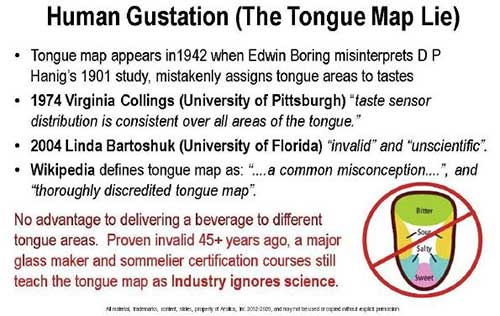
Stay away from seminars that preach that different glassware delivers the beverage to different parts of the tongue, which changes taste. During the presentation, instructors continually speak about attributes one should be tasting to influence attendees’ perceptions through the power of suggestion. Consider the physical delivery of a beverage from vessel to mouth; all vessels are placed upon the lower lip, past the lower front teeth when drinking to prevent spilling. Taste is the same whether the vessel is a banana leaf, skull, clamshell, tin can, fine crystal, or a fighter jet refueling tanker. Lingual (tongue) contact inside the mouth is not affected by outside-the-mouth vessel shape and will always be the same. Tongue map? For shame: one black mark for twisting science, another for deceiving those eager to learn useful information, and a third for continuing to teach what has been repeatedly proven wrong.
Myth #7 The ISO Spirits Glass: There is no ISO spirits glass, and never has been. Spirits evaluation has evolved through the efforts of a few concerned pioneers who decided to convey their interest and high appreciation of spirits to others, yet they possessed little knowledge of applied science. They intended to bring some semblance of order to tasting, evaluating, and classifying liquors and spirits, and they adopted the historic tiny rim copita “dock glass” as their preferred standard for nosing and tasting. Glassware manufacturers refused to distinguish themselves from competitors by daring to make perhaps unacceptable style changes to a widely accepted shape identity.
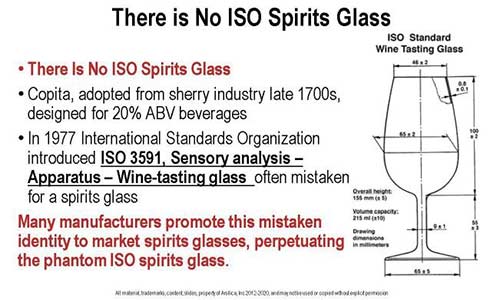
In 1977, the ISO (International Standards Organization) adopted a wine glass standard specification, ISO 3591. In a move to improve sales, glassware manufacturers raced to be first to get ISO wine glasses to the public, filling an overreaction to a perceived demand to standardize. As the feeding frenzy for wine glass sales leveled off, glassware marketers quickly discovered the similarity in size and shape of the standard glass to the traditional copita commonly used in spirits tasting. To create the appearance of embracing the science implied by an ISO standard, manufacturers employed creative marketing, taking it upon themselves to label the copita as an ISO Spirits glass (see exhibit).
Over the years, the ISO 3591 has been abandoned by most wine evaluators in favor of larger bowl vessels which provide larger headspace, allowing the nose to be inserted beyond the vessel rim, yet the standard has not been revised. The original copita from the 1700s was designed for 20% ABV fortified wine (sherry) and no doubt contributed heavily to the shape of the standard as established in 1977. Glass manufacturers’ marketing ploy to increase sales, augmented by the public’s wide and unquestioned acceptance of copita and tulips as acceptable spirits tasting, and nosing glasses have created a mistaken impression that has seduced spirits drinkers into believing the copita is the official ISO spirits vessel standard.
The Takeaway: Understanding and communicating busted tasting myths provides immediate benefits:
- One becomes more focused on discovering aroma rather than frivolous, erroneous distractions.
- Exposing the truth raises the educational level and overall quality of tastings and evaluations.
- Reading and embracing science, rationale and logic improves evaluator diagnostic capabilities.
An Experiment to Establish the Perspective of the Components of Flavor: Remember, Flavor = Aroma (90%) + Taste (5%) + Mouthfeel (5%).
Taste has little effect on the spirit flavor. Pinch or block the nose shut. Taste an equal amount of whiskey, rum, vodka, tequila, gin, and cognac from the same size and style of glass, but randomly presented to you while blindfolded so you have no idea which spirit is being sampled. Try to identify each spirit. The burn of 40%+ alcohol burn on the palate is in all spirits, but only minor differences in sweet, sour, salty, bitter, and umami, as well as slight differences in mouthfeel (oily, astringency, acidity, etc.) will be apparent.
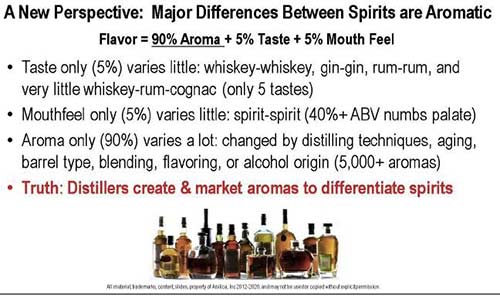
From these clues only, it is extremely difficult, if not impossible to determine the source of the spirit (grain, fruit, molasses, sugar cane, herbs, vegetable, etc.) and therefore spirit type (whiskey, cognac, rum, tequila). The blindfold and uniform glassware eliminate visual and touch (feel) clues as to spirit type and blocking the nose leaves only taste and mouthfeel to evaluate. Taste and mouthfeel differences will not accurately identify spirit type or quality, and aromas become the most important factor. Viewing spirits from a different perspective places the contributions of nose, taste, and mouthfeel in a proper order of magnitude and perspective for the serious evaluator.
A New Perspective: Distillers create and market different aromas for drinkers by using different distilling techniques, barrel aging, blending, flavoring, or sources (grains, fruits, sugar cane, etc.), see the exhibit. This perspective, considering the extremely high percentage of ethanol (95%+) in spirit aromas, focuses attention on delivery, identification, and perception of the 90% aroma component of flavor as well as handling the problem of overabundant anesthetic ethanol and its detriment to better evaluation. The evaluation process is all about getting as many character aromas to the nose as possible to accurately detect and evaluate the 90% aroma component of flavor. Taste (5%) and mouthfeel (5%) can only be improved by sloshing the spirit around inside the oral cavity to ensure that most, if not all sensors have been contacted. Once the human olfactory processes and capabilities, and the basic science of evaporation are understood, the next important step is understanding the contributions and hindrances of glassware and how shape controls aroma detection.
Sensory science has evolved to a much higher degree since the 1960s when copita and derivative tulip-shaped glasses were initially considered acceptable spirits-tasting glasses. Improved methodology and applied statistics have improved sensory evaluation to achieve a 95% confidence level, much to the satisfaction of those few food and beverage industry companies that utilize professional sensory service companies or create their departments. Serious evaluators must begin to determine and rely on facts over repeating disproven myths and erroneous information to be accepted as qualified critics. See the sensory science approach to choosing the best glass.
Specifically, state-of-the-art sensory science can and does evaluate and compare different types of glassware, reliably determining differences in aroma profiles attributable to glassware size and shape. Evaluators and the spirits industry must rely on science to replace myth with truth and pave the way for better understanding, raising the quality bar, and determining consumer preferences and predictability. See how we designed the best spirits glass.

